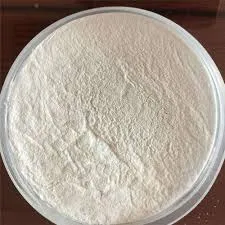
Nov . 11, 2024 10:15 Back to list
hpmc cmc
The Role of HPMC and CMC in Pharmaceutical Formulations
In the ever-evolving field of pharmaceuticals, the development of effective drug formulations is crucial to ensuring optimal therapeutic outcomes. Among the various excipients used in pharmaceutical preparations, Hydroxypropyl Methylcellulose (HPMC) and Carboxymethyl Cellulose (CMC) stand out due to their unique properties and versatile applications. This article delves into the characteristics, functionalities, and roles of HPMC and CMC in drug formulation.
Understanding HPMC and CMC
HPMC is a semi-synthetic derivative of cellulose that boasts hydrophilic properties. It is primarily used as a thickening agent, stabilizer, and emulsion regulator. Its ability to form gel-like substances when hydrated makes it particularly valuable in various pharmaceutical applications, including tablet coatings and controlled-release formulations.
CMC, on the other hand, is a water-soluble polymer derived from cellulose. It is produced by the carboxymethylation of cellulose, leading to enhanced solubility in water. CMC is commonly utilized as a thickener, binder, and suspending agent. Its anionic nature facilitates its use in diverse formulations, helping to improve the stability and bioavailability of active pharmaceutical ingredients (APIs).
.
Both HPMC and CMC serve pivotal roles in the formulation of solid dosage forms, such as tablets and capsules. In tablet formulations, HPMC is frequently employed as a binder. It enhances the mechanical strength and integrity of the tablets while controlling the release profile of the API. For extended-release formulations, HPMC provides a sustained release mechanism, allowing for a gradual release of the drug over time. This is particularly beneficial for drugs that require consistent blood levels for therapeutic efficacy.
hpmc cmc

Similarly, CMC is utilized in tablet and capsule formulations to improve disintegration and dissolution rates. As a binder, CMC enhances the cohesiveness of granules during the manufacturing process while ensuring rapid disintegration upon ingestion. This property is particularly advantageous for immediate-release formulations, where quick absorption of the drug is desired.
Stabilization and Viscosity Control
Both HPMC and CMC exhibit excellent stabilizing properties, making them ideal for use in suspensions, emulsions, and gels. In liquid formulations, HPMC acts as a protective colloid, preventing the aggregation of particles and ensuring uniform distribution of the API. Its ability to maintain viscosity is critical for the stability and shelf-life of liquid formulations.
Similarly, CMC serves as a stabilizing agent in various liquid dosage forms. Its viscosity-enhancing properties contribute to the physical stability of suspensions and emulsions, preventing sedimentation and phase separation. This ensures that patients receive a consistent dose of medication with each administration.
Conclusion
In summary, Hydroxypropyl Methylcellulose (HPMC) and Carboxymethyl Cellulose (CMC) are indispensable excipients in the pharmaceutical industry. Their unique properties and functionalities play a significant role in enhancing the quality, stability, and efficacy of drug formulations. From improving tablet cohesiveness and release profiles to stabilizing liquid formulations, HPMC and CMC contribute to the successful development of various dosage forms.
As the pharmaceutical landscape continues to evolve with advancements in drug delivery systems and personalized medicine, the importance of HPMC and CMC will undoubtedly persist. Their versatility and reliability make them essential components in the formulation and manufacturing of pharmaceuticals, ensuring that patients receive safe and effective medications tailored to their therapeutic needs. As research and innovation progress, the potential applications of these excipients will likely expand, opening new avenues for improved patient care and treatment outcomes in the pharmaceutical realm.
-
Versatile Hpmc Uses in Different Industries
NewsJun.19,2025
-
Redispersible Powder's Role in Enhancing Durability of Construction Products
NewsJun.19,2025
-
Hydroxyethyl Cellulose Applications Driving Green Industrial Processes
NewsJun.19,2025
-
Exploring Different Redispersible Polymer Powder
NewsJun.19,2025
-
Choosing the Right Mortar Bonding Agent
NewsJun.19,2025
-
Applications and Significance of China Hpmc in Modern Industries
NewsJun.19,2025







